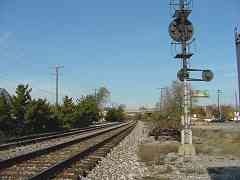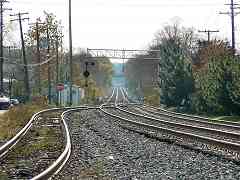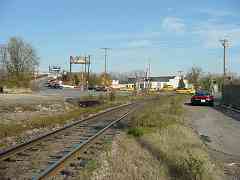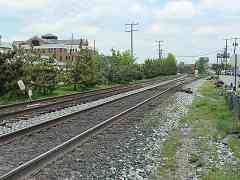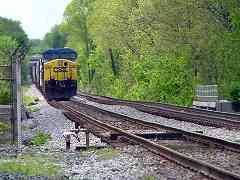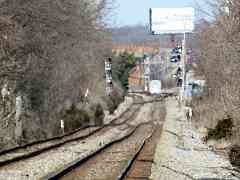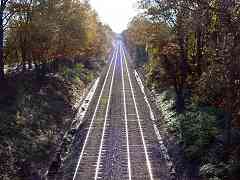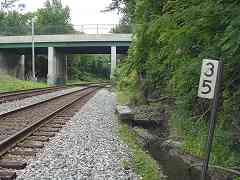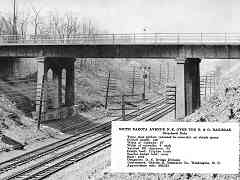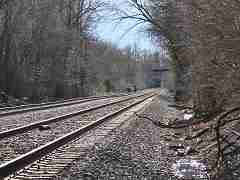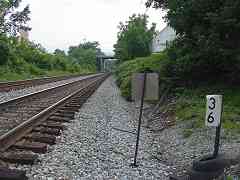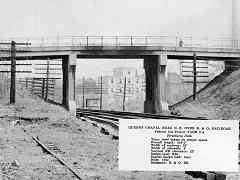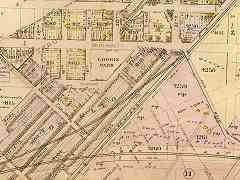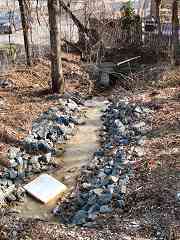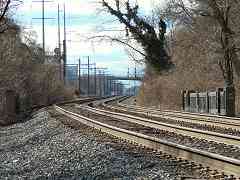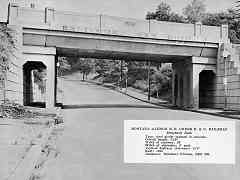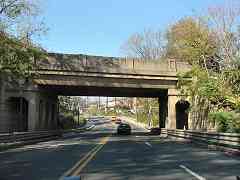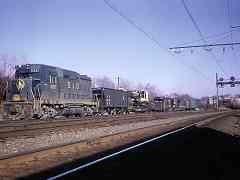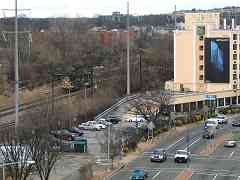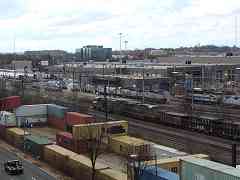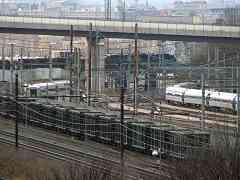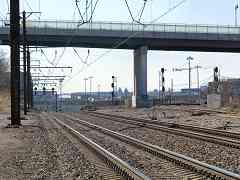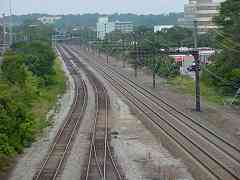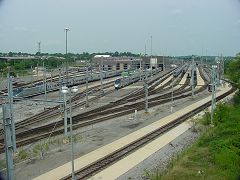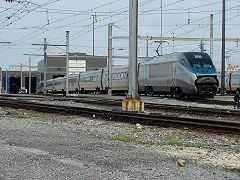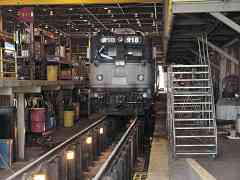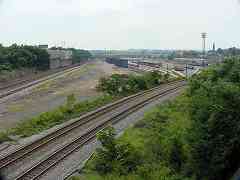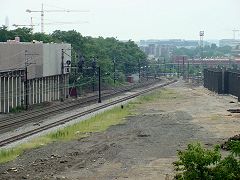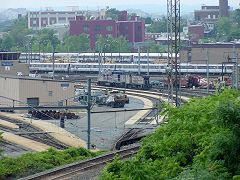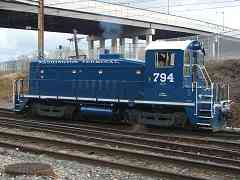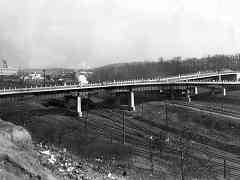|
This Baist real estate map of 1907 captures B&O's curving realignment
to facilitate access to DC's then-new Union Station. Queens Chapel Road
runs diagonally from top toward lower right, where it is simply
labelled "Road".
After passing southwest under Queens Chapel Road, B&O had continued
straight where the Baltimore & Potomac (marked PB&W here, later Pennsylvania)
Railroad crossed at diamonds. Today that location is just east of where Montana
Avenue passes under both railroads. On this map, Montana Avenue is labelled
Edwin Street, and "(Baltimore)" is now Bryant Street.
The then-new B&O alignment curves west through the area of Montello, where the
depicted street grid and housing lots existed only as a plan. Subsequent
Baist-brand maps suggest B&O's original, uncurving alignment remained
to serve local industry until New York Avenue was extended east to Bladensburg
Road during the 1930s. When built, New York Avenue followed a more easterly
route than the east-northeasterly plan depicted by this map.
| 